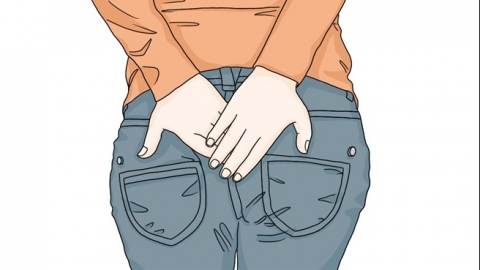What is the difference between bleeding from an anal fissure and bleeding from hemorrhoids?
Generally, the main differences between anal fissure bleeding and hemorrhoid bleeding include the bleeding condition, pain manifestation, lesion location, inducing factors, and effects on defecation. If discomfort symptoms occur, it is recommended to seek timely treatment at a regular hospital. Detailed analysis is as follows:
1. Bleeding Condition
Anal fissure bleeding typically presents as blood on the surface of stool or dripping after defecation, with small amounts of blood visible when wiping with toilet paper, and no jet-like bleeding; Hemorrhoid bleeding can manifest as dripping or jet-like bleeding, with varying amounts, not mixed with stool, and often stops spontaneously.
2. Pain Manifestation
Anal fissure bleeding is accompanied by typical cyclical pain—severe pain during defecation, temporary relief after bowel movement, followed by renewed severe pain due to sphincter spasm, lasting for a prolonged period; Hemorrhoid bleeding is usually painless, although persistent distending or stabbing pain may occur with external hemorrhoidal thrombosis or inflammation, differing from the pain pattern of anal fissures.

3. Lesion Location
Anal fissure bleeding originates from a skin tear or ulcer in the anal canal below the dentate line, commonly occurring at the posterior midline of the anal canal; Hemorrhoid bleeding arises from venous clusters beneath the mucosa of the lower rectum or anal canal skin, with internal hemorrhoids located above the dentate line and external hemorrhoids below it.
4. Inducing Factors
Anal fissure bleeding is often caused by dry, hard stools tearing the anal skin during constipation, with frequent diarrhea or anal canal stenosis also potentially inducing it; Hemorrhoid bleeding is commonly caused by increased abdominal pressure, such as straining during constipation, prolonged sitting or standing, pregnancy, obesity, and other conditions that elevate venous pressure leading to rupture.
5. Effects on Defecation
Patients with anal fissures often fear defecation due to pain, easily forming a vicious cycle of constipation worsening the fissure; Patients with hemorrhoids generally do not significantly resist defecation due to bleeding, but may experience anal heaviness or a feeling of incomplete evacuation.
In daily life, attention should be paid to healthy dietary habits, avoiding prolonged sitting, and maintaining smooth bowel movements to prevent anorectal diseases.





